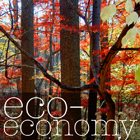WIND ENERGY DEMAND BOOMING
COST DROPPING BELOW CONVENTIONAL SOURCES MARKS KEY MILESTONE IN U.S. SHIFT TO RENEWABLE ENERGY
22 March 2006 ::
Lester R. Brown
When Austin Energy, the publicly owned utility in Austin, Texas, launched its GreenChoice program in 2000, customers opting for green electricity paid a premium. During the fall of 2005, climbing natural gas prices pulled conventional electricity costs above those of wind-generated electricity, the source of most green power. This crossing of the cost lines in Austin and several other communities is a milestone in the U.S. shift to a renewable energy economy.
Austin Energy buys wind-generated electricity under 10-year, fixed-price contracts and passes this stable price on to its GreenChoice subscribers. This fixed-price energy product is quite attractive to Austin’s 388 corporate GreenChoice customers, including Advanced Micro Devices, Dell, IBM, Samsung, and 3M. Advanced Micro Devices expects to save $4 million over the next decade through this arrangement. School districts are also signing up. Round Rock School District, for example, projects 10-year savings to local taxpayers at $2 million.
Facing a Texas-style stampede of consumers wanting to sign up for the current remaining supply of green electricity, Austin Energy has resorted to a GreenChoice raffle that will be held on March 23. All its customers—both residential and business—were invited to participate in the drawing.
A similar situation has unfolded in Colorado with Xcel Energy, which is the state’s largest electricity supplier. Xcel’s 33,000 Windsource customers, who until late 2005 were paying $6 more each month for their electricity, are now paying slightly less than those using conventional electricity, which comes mostly from natural gas and coal. To meet fast-growing demand, Xcel is currently soliciting proposals from wind developers for up to 775 megawatts of new wind power generation, enough to supply 232,000 Colorado homes with electricity.
Austin Energy and Xcel Energy are among the first utilities to pass on the falling cost of wind energy to their customers. In the short run, the price advantage of wind over conventional electricity may disappear as the surging demand for wind electricity from climate-conscious customers outruns the supply, driving up the price, and as natural gas prices fall from their late 2005 highs. Over the longer term, however, as reserves of natural gas are depleted, its price is projected to rise, giving a strong advantage to wind.
Interest in wind energy is rising as production costs fall. Although media attention focuses on communities with a not-in-my-backyard (NIMBY) response to wind turbines, such as the large, off-shore wind farm planned off Cape Cod, in most of the country wind farms are enthusiastically welcomed. Here, it’s the PIIMBY syndrome—put-it-in-my-backyard.
When Xcel announced it would develop several hundred megawatts of additional wind-generating capacity, it got the attention of ranching communities throughout wind-rich eastern Colorado. In tiny ranch-country towns like Grover, near the Wyoming border, ranchers welcomed a proposed 300-megawatt wind farm that would span some 30 ranches.
With a large, advanced-design wind turbine generating easily $100,000 worth of electricity per year, even a 3-percent royalty would earn ranchers $3,000 a year from leasing a quarter-acre of ranchland. And they can still run cattle on the land. If the proposed project is approved as expected, these 30 or so ranchers will have an average of seven turbines each, yielding roughly $21,000 a year in additional income. A decade from now, there may be thousands of ranchers who will be earning more selling electricity than they do selling cattle.
In upstate New York, dairy farmers in Lewis County near Lake Ontario warmly embraced the 195-turbine Maple Ridge Wind Farm, and the $5,000 to $10,000-annual royalty offered for each of the turbines on their land. Rural communities welcome wind farms because they provide income to farmers and ranchers, skilled jobs, cheap electricity, and additional tax revenue to upgrade schools and maintain roads.
The growing profitability of wind energy is attracting big-time players. Four years ago, General Electric purchased Enron Wind, one of Enron’s few profitable segments, parlaying its advanced wind turbine design into a leading position in the world wind turbine market.
In mid-2005, Goldman Sachs purchased Zilkha Renewable Energy, a small wind farm development company. Now called Horizon Wind Energy, this wholly-owned subsidiary of Goldman Sachs has under construction or in the planning stages 4,000 megawatts of wind-generated electricity, enough to supply electricity to 1.2 million homes.
AES, a leading international player in electricity generation, has used its purchase of SeaWest, another wind developer, to establish a strong position in the U.S. wind sector. It now has under development 1,800 megawatts of wind-generating capacity. Shell, one of the leading bidders for offshore wind rights in the United Kingdom, owns 315 megawatts of wind-generating capacity in the United States and is planning more. And BP is mapping out areas in the United States where it could build some 2,000 megawatts of wind-generating capacity.
Overall, U.S. wind-generating capacity expanded by 36 percent in 2005, reaching 9,149 megawatts. This year it could expand by 50 percent. At the end of 2005, there were commercial wind farms in 30 states. (See data.)
Wind power generation would grow even faster if it were not constrained by the availability of turbines. General Electric, now supplying 60 percent of the U.S. wind turbine market, is sold out through 2007. Clipper Windpower, a startup turbine manufacturer, is planning to produce 20 of its 2.5-megawatt Liberty turbines per month by mid 2006 and a total of 250 turbines in 2007. Its production is also committed well into the future.
After years of industry uncertainty, when Congress allowed the wind production tax credit (PTC) to lapse several times, the 2005 PTC extension through 2007 has given investors renewed confidence in the future of wind power. The extension of the PTC, which is designed to offset subsidies to fossil fuels and nuclear power, is leading to record growth in the number of new wind farms planned.
Wind energy is emerging as a centerpiece of the new energy economy, because it is abundant, inexpensive, inexhaustible, widely distributed, clean, and climate-benign. Three of the 50 states—North Dakota, Kansas, and Texas—have enough harnessable wind energy to satisfy national electricity needs. The cost of wind-generated electricity has fallen from 38¢ per kilowatt-hour in the early 1980s to 4¢ to 6¢ today, offering an almost endless supply of cheap energy.
Beyond that, these wells will never go dry. No one can cut off the supply or raise the fuel cost. And wind can supply our energy needs without disrupting the earth’s climate.
Originally Published online: 22 March 2006
(http://www.earth-policy.org/Updates/2006/Update52.htm)
Reproduced here by Permission of Earth Policy Institute
Copyright © 2006 Earth Policy Institute












